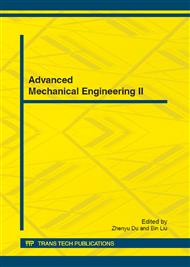p.270
p.275
p.280
p.285
p.289
p.293
p.301
p.306
p.310
Study on the Properties of MWNTs/Polyethylene Nanocomposites by In Situ Polymerization
Abstract:
Multi–walled carbon nanotubes (MWNTs)/polyethylene (PE) nanocomposites were prepared via in situ polymerization with MWNTs supported Cp2ZrCl2 catalyst. XPS and FESEM results imply that Cp2ZrCl2 catalyst has been immobilized in the surface of the MWNTs supports by a MAO bridge. The efficient dispersion of MWNTs in PE matrix and the strong compressive forces associated with PE on the MWNTs were demonstrated by TEM, FESEM and Raman spectra. With introducing 0.2 wt.-% MWNTs, both the tensile strength and elongation of MWNTs/PE nanocomposite increased by factors of 1.6 (from 29 MPa to 45 MPa) and 1.5 (from 909% to 1360%) comparing with the pure PE, respectively. Morphology observation of fractured surface, in accordance with the Raman results, revealed that the PE firmly adheres to the nanotubes, which is responsible for the significant improvement of the mechanical properties of nanocomposites. Thermal stabilities of the nanocomposites were significantly improved. In addition, the MWNTs/PE nanocomposites show very high UV shielding properties, which could increase photooxidative stability of the PE.
Info:
Periodical:
Pages:
289-292
Citation:
Online since:
July 2012
Authors:
Price:
Сopyright:
© 2012 Trans Tech Publications Ltd. All Rights Reserved
Share:
Citation:


